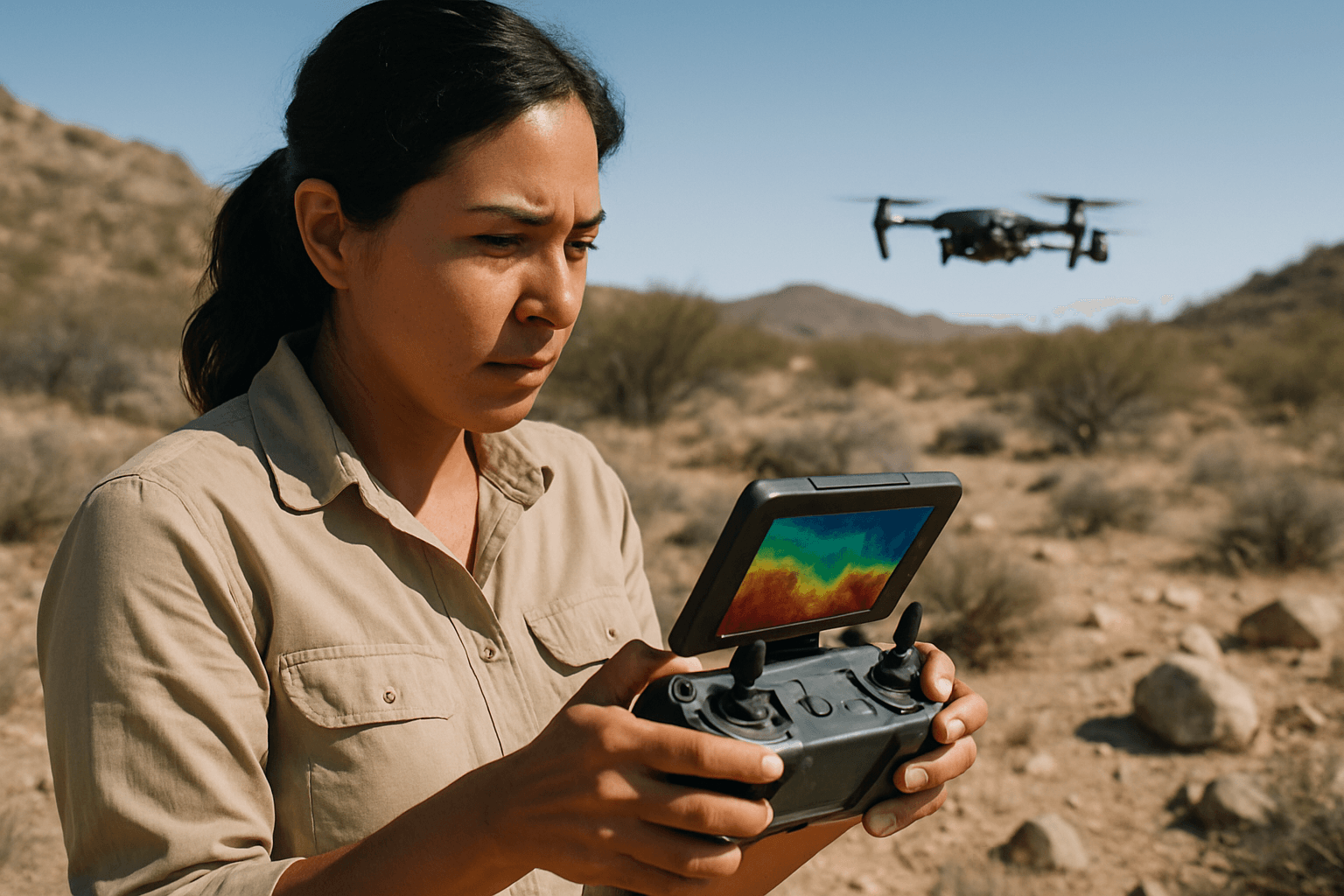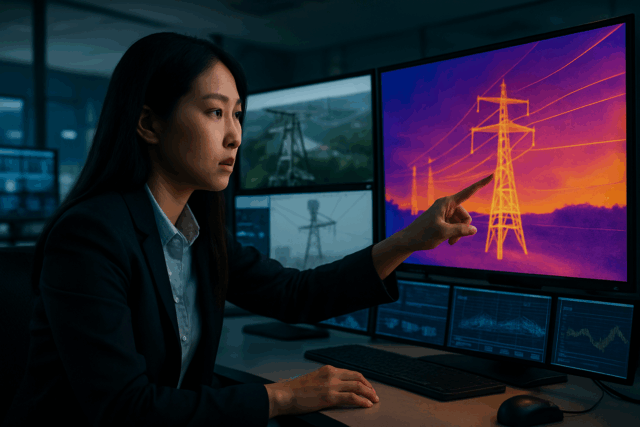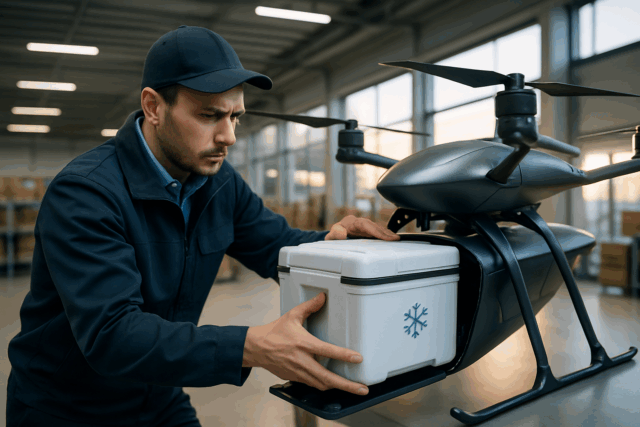Understanding how reptiles regulate their body temperature, a process known as thermoregulation, is fundamental to comprehending their ecology, behavior, and survival in a changing world. As ectothermic vertebrates, reptiles rely profoundly on external environmental conditions to maintain optimal internal temperatures, which are critical for their physiological functions, including digestion, locomotion, and reproduction. However, studying this intricate process in natural habitats has historically presented significant challenges. Now, cutting-edge drone technology equipped with thermal imaging cameras is revolutionizing how scientists gather crucial data, offering unprecedented, non-invasive insights into the thermal lives of these fascinating creatures.
The Vital Role of Thermoregulation in Reptile Survival
Reptiles are masters of behavioral thermoregulation, employing various strategies to absorb or dissipate heat from their surroundings. This can involve basking in the sun, seeking shade, burrowing, or altering their body posture to control heat exchange. Maintaining a stable body temperature is not merely about comfort; it directly impacts their metabolic rates, immune responses, and even reproductive success. Deviations from their preferred temperature ranges can lead to physiological stress, reduced activity, and increased vulnerability to predators. Therefore, accurately monitoring their thermal dynamics in diverse ecosystems is paramount for conservation and ecological research.
Traditional Challenges in Studying Reptile Thermal Ecology
Historically, researchers have employed a variety of methods to study reptile thermoregulation, each with inherent limitations:
Invasive Monitoring Techniques
Traditional fieldwork often involves physically capturing and implanting temperature loggers or telemetry devices in reptiles. While providing direct body temperature data, these methods can be highly invasive, potentially causing stress, altering natural behavior, or even injuring the animals. Such interventions can compromise the ecological relevance of the collected data and are not suitable for all species, particularly those that are rare, elusive, or highly sensitive to human disturbance.
Limitations of Ground-Based Surveys and Visual Observation
Ground-based surveys rely on direct observation, which is labor-intensive, time-consuming, and often limited by terrain, vegetation density, and the cryptic nature of many reptiles. Animals can be camouflaged, hidden in dense foliage, or active only at night, making visual detection extremely difficult. Furthermore, human presence during these surveys can disturb the animals, influencing their natural thermoregulatory behaviors, and leading to inaccurate observations.
Inaccuracies with Operative Temperature Models
Some methodologies involve placing physical models (e.g., hollow copper electroforms) in the environment to estimate “operative temperatures”—the body temperature an animal of a specific size and shape would attain if it were in thermal equilibrium with its surroundings. While useful for small animals, these models often assume zero heat capacity, which can lead to substantial overestimations of available body temperatures for larger reptiles that heat and cool more slowly. This methodological fallacy can result in serious misinterpretations of field data, especially when environmental temperatures fluctuate rapidly.
Difficulties with Camera Traps
Camera traps can monitor animal populations over prolonged periods, but they often struggle to provide real-time location data or accurately distinguish individual animals, particularly when the same individuals are repeatedly detected. They also lack the ability to directly measure body temperature or thermal profiles, which are crucial for thermoregulation studies.
The Advent of Drone-Based Thermal Imaging
The integration of Unmanned Aerial Vehicles (UAVs), or drones, with thermal imaging technology offers a transformative solution to many of these challenges. Thermal drones are equipped with infrared or thermal sensors that detect the heat (infrared radiation) emitted by objects, converting this energy into digital images. This technology makes the invisible visible, highlighting heat signatures against cooler backgrounds, regardless of ambient light conditions or camouflage.
How Thermal Imaging Drones Work
Drones carry specialized thermal cameras that measure infrared energy. This data is then processed into a visual image, where different temperatures are represented by varying colors or shades, often with hotter areas appearing brighter. This allows researchers to identify the distinct heat signature of a reptile, even when it is hidden from the naked eye. Advanced drones may also incorporate both RGB (visual) and thermal sensors, providing comprehensive data sets. Some drones can be pre-programmed with GPS coordinates for autonomous flight, allowing researchers to focus on data collection.
Key Benefits for Reptile Thermoregulation Research
Drone-based thermal imaging brings a host of advantages to the study of reptile thermoregulation:
Non-Invasive Data Collection
One of the most significant benefits is the ability to collect data from a safe distance, minimizing human disturbance to animals and their habitats. Drones can observe reptiles in their natural state, ensuring that the collected thermoregulatory data reflects genuine behavioral patterns.
Enhanced Visibility and Detection
Thermal cameras excel in conditions where visual observation is limited, such as dense vegetation, under canopy cover, or during nocturnal hours, which are prime activity times for many reptile species. The heat signature of an animal stands out clearly, even when it blends perfectly with its surroundings optically. This capability is revolutionary for tracking nocturnal species without the need for artificial lighting that could disrupt their natural behavior.
Access to Remote and Challenging Environments
Drones can easily navigate difficult terrains like mountains, marshlands, or dense forests that are hazardous or inaccessible to human researchers, significantly improving safety and efficiency for data collection. This expanded reach allows for more comprehensive studies across larger and more diverse habitats.
Efficient and Accurate Data Acquisition
Thermal imaging drones can cover vast areas much more quickly than ground-based teams, providing more comprehensive data on animal populations, spatial distribution, and behavioral patterns. High-resolution thermal sensors offer detailed data, enabling researchers to identify individual animals, track their movements, and monitor population dynamics with greater precision. This efficiency makes it possible to gather robust datasets for statistical analysis in a relatively short period.
Real-Time Monitoring and Behavioral Insights
Many thermal drone systems allow for real-time viewing of thermal imagery, providing immediate feedback to researchers. This capability can be crucial for observing dynamic thermoregulatory behaviors, such as basking, shuttling between microhabitats, or burrowing, and understanding how reptiles react to changing environmental conditions.
Applications and Case Studies
While broad applications for reptile thermoregulation specifically are still emerging, the foundational use cases in wildlife monitoring demonstrate immense potential:
Population Monitoring and Distribution Mapping
Thermal drones have proven effective in estimating populations of various wildlife, including white-tailed deer and Formosan sika deer, by accurately counting individuals and mapping their spatial distribution across large areas. This methodology can be directly applied to reptiles to understand population densities and habitat use related to thermal resources.
Tracking Elusive and Nocturnal Reptiles
For species that are difficult to detect visually, thermal drones offer a game-changer. For example, drones equipped with thermal cameras have been successfully used to spot and track invasive Burmese pythons in the Florida Everglades at night, their prime hunting time. This demonstrates the technology’s power in locating cryptic reptiles and understanding their activity patterns in relation to temperature. The thermal imagery could pick up snakes as small as 18 inches, allowing for the identification and potential elimination of hatchling clusters.
Assessing Microhabitat Use and Thermal Landscapes
By mapping the thermal landscape of an environment, researchers can better understand which microhabitats reptiles utilize for thermoregulation. This data can inform conservation strategies, such as preserving heterogeneous landscapes and providing artificial refugia, which are essential for supporting reptile populations.
Limitations and Future Directions
Despite their immense potential, drone-based thermal imaging for reptile thermoregulation studies does have considerations:
Environmental Influences on Thermal Data
The accuracy of thermal imaging can be influenced by environmental factors such as ground heat, which can limit optimal flight times, or thick canopy cover that obstructs the view of ground-dwelling animals. Careful planning and optimized flight paths are necessary to mitigate these constraints.
Drone Noise and Disturbance
While generally less disruptive than human presence, the noise and close proximity of drones can still disturb some animal species, leading to behavioral changes. Researchers must consider flight altitude and drone type to minimize impact.
Data Interpretation and Analysis
Extracting precise body temperatures from thermal images requires sophisticated calibration and analysis, especially when accounting for emissivity variations in reptile skin and environmental factors. Further research is needed to refine these methodologies specifically for diverse reptile species and their unique thermoregulatory needs.
As technology continues to advance, drones are poised to play an increasingly vital role in understanding and protecting reptile species. Ongoing developments in drone autonomy, sensor resolution, and data processing algorithms will further enhance the accuracy, efficiency, and scope of thermal imaging applications in herpetological research. The ability to monitor reptiles non-invasively, across vast and challenging landscapes, offers a powerful tool for unraveling the complexities of reptile thermoregulation and informing critical conservation efforts in a rapidly changing climate.





